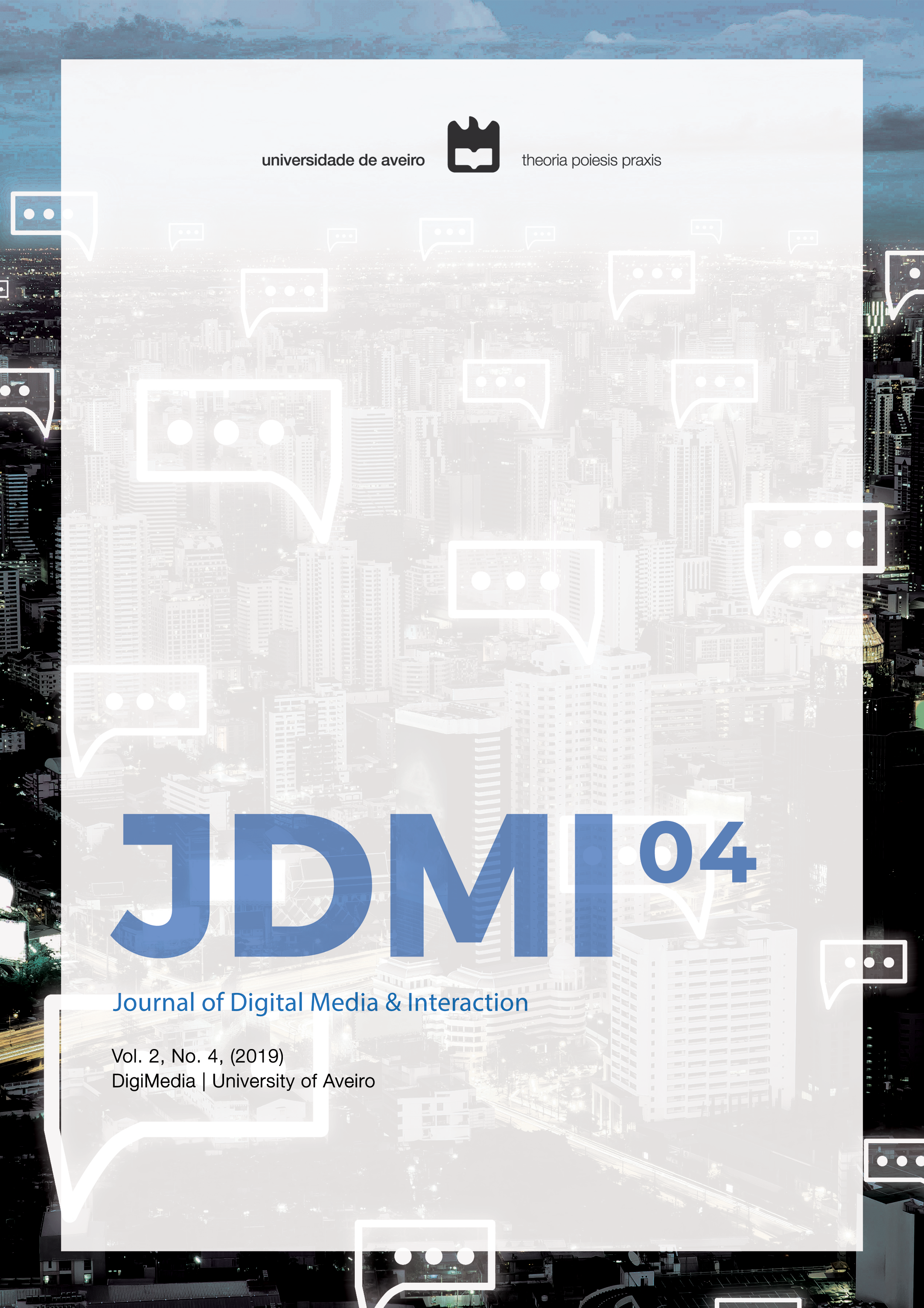Playing (with) the Music: Jogo e Apropriação na Cena Musical Chiptune
(Playing (with) the Music: Game and Appropriation in the Chiptune Music Scene)
Abstract
In this paper we present a discussion about the chiptune scene, in a perspective of "appropriation" and mutual adaptation between users and technology, from a systematization of different discourses (film and bibliography). From this we extract a perception about the anthropological dimension of the experience of play (play of the game) and present some scene members practices, with its proper interpretations.
Downloads
References
Bonenfant, M. (2015). Le libre jeu: Réflexion sur l’appropriation de l’activité ludique.Montréal: Liber.
Caillois, R. (1967). Les jeux et les hommes: le masque et le vertige.Paris: Gallimard.
Certeau, M. d. (1998). A invenção do cotidiano: artes de fazer.Petrópolis: Vozes.
Dewey, J. (2010). Arte como experiência.São Paulo: Martins Fontes.
Driscoll, K., & Diaz, J. (2009). Endless loop: A brief history of chiptunes. Transformative Works and Cultures(2), 1-14.
Falcão, T. (2011). Camadas relacionais de prescrição: alicerces para uma metodologia de análise dos jogos eletrônicos. Anais do XX Encontro da Compós(pp. 1-19). Porto Alegre: Compós.
Flusser, V. (2002). Filosofiada caixa preta: ensaios para uma futura filosofia da fotografia.Rio de Janeiro: Relume Dumará.
Gallagher, M. (2009). The Music Tech Dictionary: A Glossary of Audio-Related Terms and Technologies.Boston: Cengage Learning.
Gibson, J. J. (2015). The ecological approach to visual perception.New York: Psychology Press.
Goriunova, O. (2012). Art Platforms and Cultural Production on the Internet.New York: Routledge.
Henriot, J. (1983). Le jeu.Paris: Editions Archétype82.
Huizinga, J. (1949). Homo Ludens: A Study of the Play-Element in Culture.London: Routledge.
Juul, J. (2005). Half-Real: Video Games between Real Rules and Fictional Worlds.Cambridge: The MIT Press.
Lemos, A. (2013). A comunicação das coisas: teoria ator-rede e cibercultura.São Paulo: Annablume.
Levy, S. (1994). Hackers. Heroes of the Computer Revolution.Harmondsworth: Penguin Books.
Márquez, I. (2014). Playing new music with old games: The chiptune subculture. GAME: The Italian Journal of Game Studies(3), 67-79.
McAlpine, K. (2019). Bits and Pieces: A History of Chiptunes.New York: Oxford University Press.
Montfort, N., & Bogost, I. (2009). Racing the Beam: The Atari Video Computer System.Cambridge/MA: The MIT Press.
Newman, J. (2017, March 24). The sound of SID: 35 years of chiptune's influence on eletronic music.Retrieved from The Conversation: http://theconversation.com/the-sound-of-sid-35-years-of-chiptunes-influence-on-electronic-music-74935
Nietzsche, F. (2012). Assim falou Zaratustra.São Paulo: Martin-Claret.
Norman, D.(2013). The design of everyday things.New York: Basic Books.
O'Hara, R. (2011). Commodork: Sordid Tales from a BBS Junkie.Morrisville/NC: Lulu Press.
Parret, H. (1997). A estética da comunicação: além da pragmática.Campinas: Editora da UNICAMP.
Polo, J. (Diretor). (2013). Europe in 8 bits[Filme Cinematográfico].
Schäfer, C. (2013). Chipmusic e a teoria das materialidades. Revista Novos Olhares, Vol. 2, N. 1., 1-7.
Shusterman, R. (1998). Vivendo a arte: a estética pragmatista e a cultura popular.São Paulo: Editora 34.
Théberge, P. (1997). Any sound you can imagine: making music / consuming technology.Hanover: Wesleyan/University Press of New England.
Walthew, N. (2009, April 26). Lo-Tek Resistance: Episode One –Capitol Hill. (G. Hayward, Interviewer)
Wessel, D. (December de 1978). Timbre Space as a Musical Control Structure. IRCAM –Centre Georges Pompidou
Copyright (c) 2019 Emmanoel Ferreira, Jorge Cardoso Filho

This work is licensed under a Creative Commons Attribution-NonCommercial-NoDerivatives 4.0 International License.
Authors who publish in the JDMI agree to the following terms:
-
Authors retain copyright and grant the journal the right of first publication with the work simultaneously licensed under a Creative Commons BY-NC-ND 4.0. This licensing allows others to share the work with no changes and acknowledgement of the work's authorship and initial publication in this journal, but not for commercial use.
-
Authors are able to enter into separate, additional contractual arrangements for the non-exclusive distribution of the journal's published version of the work (e.g., post it to an institutional repository or publish it in a book), with an acknowledgement of its initial publication in this journal.
-
Authors are permitted and encouraged to post their work online (e.g., in institutional repositories or on their website) after publication, as it can lead to productive exchanges, as well as earlier and greater citation of published work.
Copyrights to illustrations published in the journal remain with their current copyright holders.
It is the author's responsibility to obtain permission to quote from copyright sources.
Any fees required to obtain illustrations or to secure copyright permissions are the responsibility of authors.
Additional Information
All correspondence concerning contributions, books and other review material should be sent to: deca-jdmi@ua.pt


